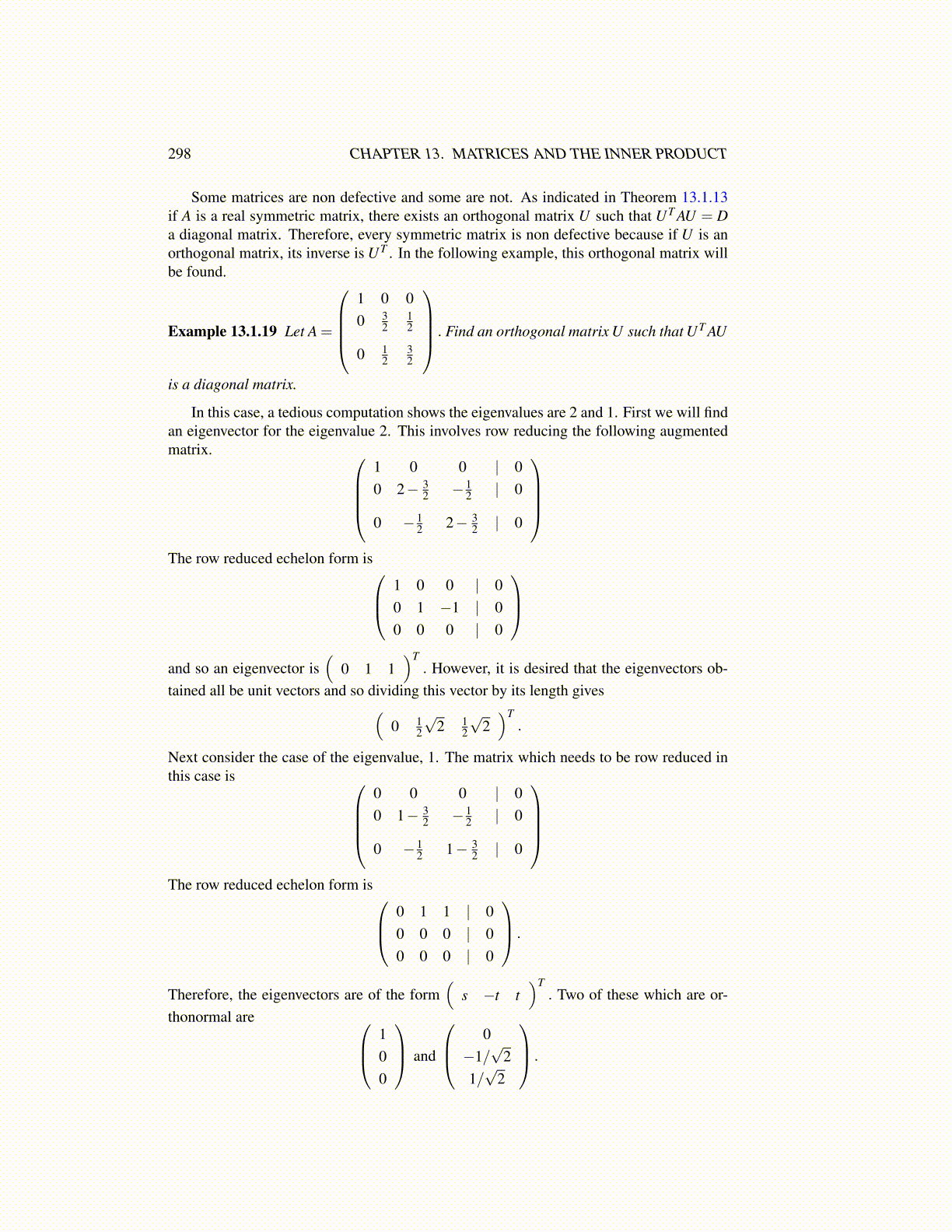
298 CHAPTER 13. MATRICES AND THE INNER PRODUCT
Some matrices are non defective and some are not. As indicated in Theorem 13.1.13if A is a real symmetric matrix, there exists an orthogonal matrix U such that UT AU = Da diagonal matrix. Therefore, every symmetric matrix is non defective because if U is anorthogonal matrix, its inverse is UT . In the following example, this orthogonal matrix willbe found.
Example 13.1.19 Let A =
1 0 00 3
212
0 12
32
. Find an orthogonal matrix U such that UT AU
is a diagonal matrix.
In this case, a tedious computation shows the eigenvalues are 2 and 1. First we will findan eigenvector for the eigenvalue 2. This involves row reducing the following augmentedmatrix.
1 0 0 | 00 2− 3
2 − 12 | 0
0 − 12 2− 3
2 | 0
The row reduced echelon form is 1 0 0 | 0
0 1 −1 | 00 0 0 | 0
and so an eigenvector is
(0 1 1
)T. However, it is desired that the eigenvectors ob-
tained all be unit vectors and so dividing this vector by its length gives(0 1
2
√2 1
2
√2)T
.
Next consider the case of the eigenvalue, 1. The matrix which needs to be row reduced inthis case is
0 0 0 | 00 1− 3
2 − 12 | 0
0 − 12 1− 3
2 | 0
The row reduced echelon form is 0 1 1 | 0
0 0 0 | 00 0 0 | 0
.
Therefore, the eigenvectors are of the form(
s −t t)T
. Two of these which are or-thonormal are 1
00
and
0−1/√
21/√
2
.